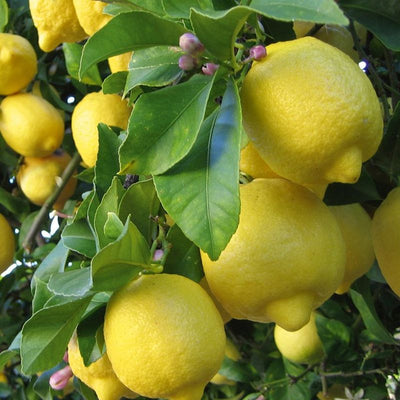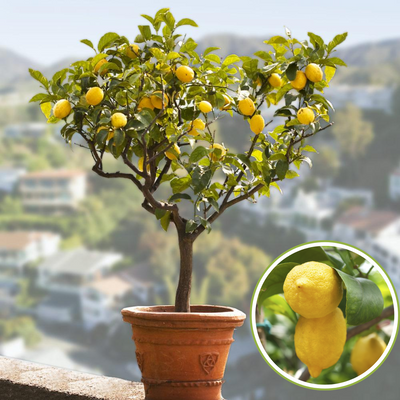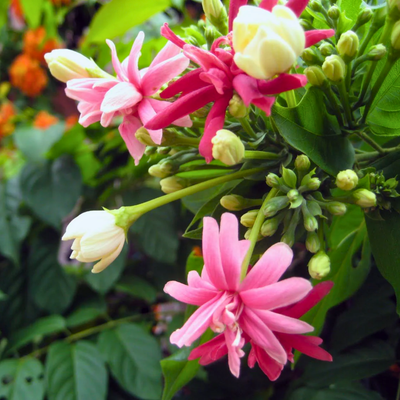




Green Paradise Offres Beutiful Kalanchoe
Plant: A Blooming Marvel of the Plant
Kingdom
About kalanchoe Plant
In the enchanting world of flora, the Kalanchoe plant stands as a testament to nature's artistry. With its vibrant hues and tenacious spirit, this remarkable succulent has garnered admirers worldwide. Whether you're a seasoned green thumb or a budding plant enthusiast, the Kalanchoe deserves a special place in your collection. In this article, we'll explore the captivating world of Kalanchoe, from its origins and unique features to care tips that ensure its health and longevity.
A Brief History
- Kalanchoe, pronounced as 'kuh-lan-KOH-ee,' is a genus of plants that belongs to the Crassulaceae family.
- Native to Madagascar and parts of Africa, this genus boasts over 200 species, each with its own distinctive characteristics.
- The name 'Kalanchoe' is thought to have Malagasy or Chinese origins, and it has been cherished for centuries due to its ornamental and medicinal properties.
Distinctive Features
- Kalanchoe is celebrated for its striking appearance.
- Its fleshy, spoon-shaped leaves form a rosette that can vary in color from deep green to vibrant red, depending on the species and environmental conditions.
- What truly steals the show, however, are its stunning clusters of petite, bell-shaped flowers that burst forth in a kaleidoscope of colors, including white, yellow, orange, pink, and red.
- This flowering marvel has earned Kalanchoe the poetic nickname 'Flaming Katy.'
Caring for Kalanchoe
Caring for Kalanchoe is relatively straightforward, making it an excellent choice for both novice and experienced gardeners. Here are some essential care tips:
Light:
Kalanchoe thrives in bright, indirect sunlight. Place it near a sunny window where it can receive filtered sunlight for most of the day.
Temperature:
Keep your Kalanchoe in a warm environment, ideally between 60°F to 85°F (15°C to 29°C). Keep it away from drafts and temperature extremes.
Watering:
Before watering, allow the top inch of soil to dry out. Overwatering can lead to root rot, so it's better to underwater than overwater. During the flowering period, water sparingly, as Kalanchoe is somewhat drought-tolerant.
Soil:
Use a well-draining succulent or cactus mix. This prevents water from accumulating around the roots, which can be detrimental to the plant.
Fertilization:
Feed your Kalanchoe with a balanced, diluted liquid fertilizer during the growing season (spring and summer) every 4-6 weeks. Avoid fertilizing during the dormant period (fall and winter).
Pruning:
Trim faded flowers and leggy growth to encourage new blooms and maintain a compact shape.
Propagation:
Kalanchoe is easily propagated from leaf or stem cuttings. Simply allow the cuttings to callus for a day or two, then plant them in a well-draining soil mix.
Medicinal and Folklore Uses
- Aside from its ornamental value, Kalanchoe has found its place in traditional medicine.
- Some species, like Kalanchoe pinnata, are believed to have medicinal properties, with anecdotal reports suggesting they can help with ailments such as wounds, inflammation, and respiratory issues.
- However, it's essential to consult a healthcare professional before using any plant for medicinal purposes, as some Kalanchoe species can be toxic if ingested.
Cultivating Kalanchoe: A Beginner's
Guide to Growing and Caring for the
Vibrant Succulent
Kalanchoe, often referred to as the "Mother of Thousands" or "Flaming Katy," is a delightful succulent known for its striking, colorful blossoms and relatively low maintenance requirements. Whether you're a seasoned gardener or just starting your plant journey, kalanchoe is an excellent choice for adding a touch of natural beauty to your home. In this comprehensive guide, we will walk you through the step-by-step process of growing and caring for this charming succulent.
Getting to Know Kalanchoe
Before we delve into the nitty-gritty of growing kalanchoe, let's get acquainted with this lovely succulent:
Appearance:
- Kalanchoe plants feature fleshy, spoon-shaped leaves that store water, making them well-suited to dry conditions.
- They come in various sizes and shapes, with some growing as compact houseplants, while others develop into larger shrubs.
Flowers:
- One of the standout features of kalanchoe is its vibrant, long-lasting flowers.
- They can be found in a range of colors, including red, orange, pink, yellow, and white.
- These cheerful blooms make kalanchoe a popular choice for indoor and outdoor decoration.
Hardiness:
- Kalanchoe is considered a hardy plant and can thrive in a variety of environments.
- However, it is essential to provide the right conditions to ensure its optimal growth and flowering.
- Now that you're acquainted with this charming succulent let's dive into the art of cultivating kalanchoe.
Step 1: Selecting the Right Pot and Soil
- Start by choosing a well-draining pot with drainage holes to prevent waterlogged roots.
- Kalanchoe doesn't appreciate sitting in water, so a pot that allows excess moisture to escape is essential.
- For soil, opt for a cactus or succulent mix, which provides the excellent drainage and aeration that kalanchoe needs.
- If you don't have this mix on hand, you can make your own by mixing potting soil with perlite or sand to enhance drainage.
Step 2: Planting Kalanchoe
- Fill your chosen pot with the prepared soil mix, leaving enough space for the kalanchoe plant.
- Gently remove the kalanchoe from its nursery container, being careful not to damage the roots.
- Place the kalanchoe into the pot, ensuring that the top of the root ball is level with the soil surface.
- Water the newly planted kalanchoe thoroughly but allow the soil to dry out between waterings.
- Overwatering is a common mistake, so be cautious not to drown your plant.
Step 3: Providing Adequate Light
- Kalanchoe is a sun-loving succulent that thrives in bright, indirect sunlight.
- A south or west-facing window is ideal for indoor plants.
- If growing kalanchoe outdoors, choose a location with partial to full sunlight.
Step 4: Maintaining the Right Temperature
- Kalanchoe prefers temperatures between 60°F to 85°F (15°C to 29°C).
- Avoid exposing it to extreme cold or heat, as it can be sensitive to temperature fluctuations.
Step 5: Fertilizing
- During the growing season, which typically spans from spring to early autumn, feed your kalanchoe with a balanced, diluted, liquid fertilizer every 4 to 6 weeks.
- During the dormant winter months, fertilizing should be avoided.
Step 6: Pruning and Deadheading
- To encourage a bushier and more compact growth habit, you can pinch back the tips of your kalanchoe's branches.
- Additionally, remove spent flowers by gently pinching them off to encourage new blooms.
Step 7: Dealing with Pests and Diseases
- Kalanchoe is generally resistant to pests and diseases.
- However, you should keep an eye out for common succulent pests like mealybugs and aphids.
- If you find an infestation, treat it right away with insecticidal soap or neem oil.
Step 8: Repotting
- Kalanchoe plants can become root-bound over time.
- If you notice that your plant has outgrown its pot or isn't thriving as it once did, consider repotting it into a slightly larger container with fresh soil.


















